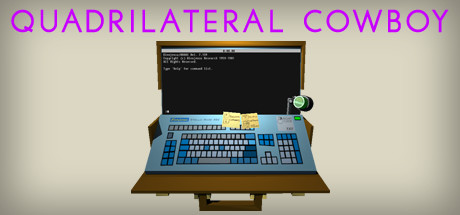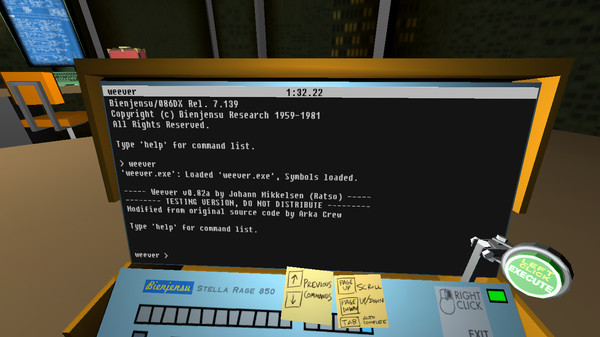Quadrilateral Cowboy
by Blendo Games





The Developer Says...
When you have a top-of-the-line hacking deck armed with a 56.6k modem and a staggering 256k RAM, it means just one thing: you answer only to the highest bidder.
Keywords
Players Like...
❤ Game Mechanics and Core Gameplay
Players hack and execute heists using a portable 56.6k modem computer deck, typing precise command-line instructions to manipulate environments and complete mission objectives. The game introduces tools like remote-controlled robots and jump pads progressively, challenging players to think creatively about spatial puzzles and timing.
❤ Puzzle Design and Complexity
Each mission presents three increasingly difficult jobs within the same environment, systematically teaching players new interaction strategies. Players must chain commands precisely, controlling multiple gadgets simultaneously to bypass security systems. Later levels require intricate script timing, with some players describing moments of brilliant problem-solving as "aha!" revelations.
❤ Hacking and Command Line Interaction
The game transforms programming into an accessible, engaging mechanic. Players use simple pseudo-code to control doors, cameras, and robotic devices. Experienced programmers can craft complex batch files, while newcomers learn basic commands through intuitive level design and environmental instructions.
❤ Gadgets and Innovative Tools
Players unlock a fascinating array of high-tech equipment, including a nimble remote-controlled robot dog (Weever), a deployable turret with precise aiming capabilities, programmable jump pads, and a groundbreaking multi-character "time travel" coordination system.
❤ Atmosphere and Aesthetic
Brendon Chung crafts a low-polygon, retro-futuristic world that captures a gritty 1980s cyberpunk vision. Chunky graphics, atmospheric music, and detailed environmental storytelling create an immersive experience that feels both nostalgic and innovative.
❤ Replay Value and Challenges
The compact campaign (6-10 hours) offers additional engagement through precision-based time trial challenges, Steam Workshop custom level support, and speedrunning opportunities that reward creative problem-solving.
❤ Player Satisfaction Highlights
Gamers consistently praise the tactile, satisfying command execution, ingenious puzzle design, subtle, environmentally-told narrative, and profound sense of strategic accomplishment.
❤ Limitations
Critical observations include brevity of the core experience, occasional technical inconsistencies, and underdeveloped potential of some mechanical concepts.
❤ Conclusion
This cyberpunk puzzle adventure transforms complex technological interactions into an accessible, thrilling gameplay experience. By making players feel like elite hackers without demanding extensive programming knowledge, it offers a truly unique interactive journey.
About | Terms of Service | Privacy Policy
Copyright ©2024 by Totally Human Media
